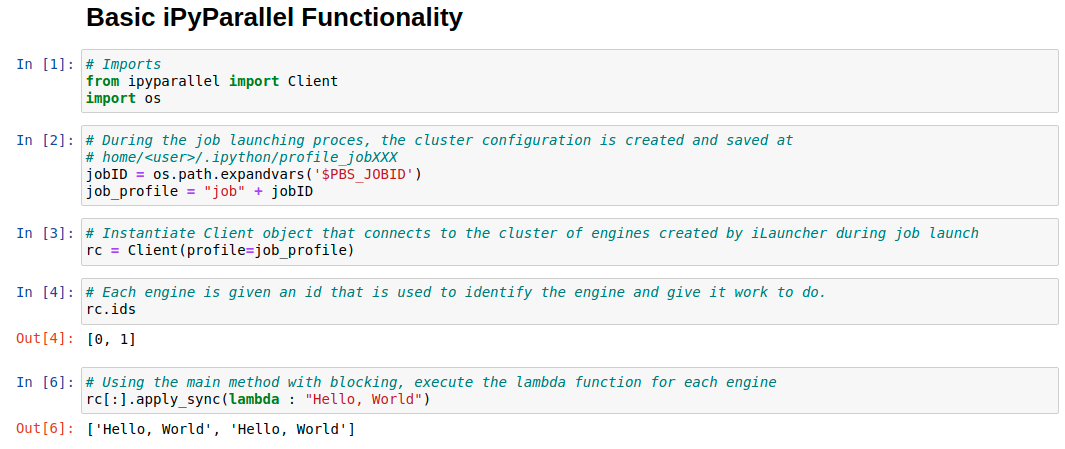
IpyParallel
Select iPyParallel as the plugin then select an option for Python Version and Type within the Application Parameters.
The plugin will create an iPyParallel cluster and launch a Jupyter Notebook/Lab that is used for interacting with the cluster.
Demonstration: Basic iPyParallel Operations
Purpose: Demonstrate how to connect to and use an iPyParallel cluster for basic tasks.
The engines can be accessed through views (ex: rc[:], rc[1], rc[::1]) and then call methods (ex: apply(), apply(), map(), map_sync()) for those engines. The _sync denotes the method is executed as a synchronous task where it blocks until all computation is complete and results returned.

IpyParallel

IpyParallel
For more information on how to use iPyParallel, please visit the iPyParallel User Guide.
For more information on how to use the Jupyter family of products, please visit jupyter.org
The Jupyter application includes Conda with Python 2.7.15 (CUDA 8/9) and Python 3.6.7, 3.7.7, and 3.8.3 (CUDA 8/9/10). The CUDA version loaded is dependent upon system and node type.
| Node Type | CPU | GPU |
|---|---|---|
| Python | 3.6 / 3.7 / 3.8 | 3.6 / 3.7 / 3.8 |
| CudaToolKit | N/A | 11.0.221 |
| cuDNN | N/A | 8.0.4 |
| TensorFlow | 2.4.1 | 2.4.0 |
| PyTorch | 1.7.0 | 1.7.0 |